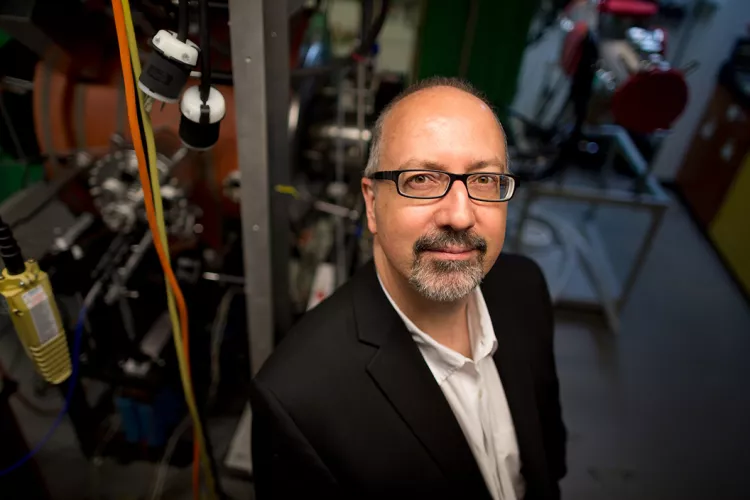Physicist Mike Brown and Students Collaborate, Earn Significant NSF Grant for Computing

Experimental physicist Mike Brown and a team of students adapted to the pandemic by developing a sophisticated computer modeling of experiments, leading to an approximately $264,000 grant from the NSF-funded XSEDE Supercomputer Allocation Program.
For 25 years, experimental physicist Mike Brown collaborated with more than 60 physics majors in his SSX plasma lab, generating over 70 scientific papers by students and 25 honors theses.
Then came COVID-19, which forced students off of campus last summer and greatly hampered the prospects of building detectors and electronics — very much a hands-on, in-person effort. Brown asked his students if they’d be willing to learn how to code so that they could replicate lab experiments from afar.
“I’m not a programmer, but the students are, and I can direct them to the right physics,” thought Brown, the Morris L. Clothier Professor of Physics. “I shut down all the pumps and equipment in the lab, and we started to think about simulations.”
The students, Ercong (Tony) Luo ’21, Miriam Moore ’22, and Shouzhou (Gary) Yang ’23, jumped at the opportunity. They teamed up with Brown and two collaborators from Bryn Mawr College — physicist David Schaffner, a former postdoctoral fellow of Brown’s, and Ph.D. candidate Carlos Cartagena — to develop sophisticated computer modeling of experiments.
“It was a tremendous success,” Brown says, leading to an approximately $264,000 grant from the NSF-funded XSEDE Supercomputer Allocation Program — a considerable and concerted investment by the National Science Foundation to boost advanced computing infrastructure in the U.S. The team also developed computational expertise, Brown says, particularly with students who he hopes can maintain some institutional memory.
“I gained knowledge about electrodynamics,” says Luo, an honors physics and mathematics major from China, “which is serving me well now that I am taking a physics seminar in the same topic.
“And I got to understand the specific challenges and promises of fusion energy,” he adds, “an important application of our work and something I passionately believe is a solution to the crisis of climate change.”
The biggest challenge was getting the code up and running, for which Brown also got help from a friend, physicist Jeffrey Oishi of Bates College, who is developing a Python-based computing platform called Dedalus. Also supporting the team’s efforts was Andrew Ruether ’94, head of academic technology support, who helped it procure 600,000 hours of processing time from the NSF XSEDE program, and Assistant Professor of Physics Tristan Smith, who offered the team access to the College’s Strelka computing cluster for test runs before simulations were moved to a Pittsburgh Bridges supercomputer with far greater processing power.
“I got to perform simulations on supercomputers for the first time,” says Luo, “and I experienced firsthand the importance of collaboration in scientific research.”



